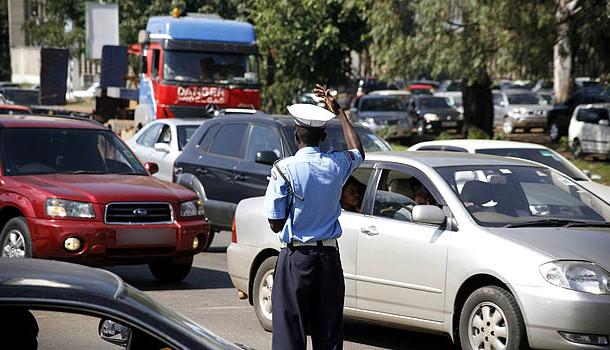Police Deny Sabotaging Plan To Get Them Off Roads
Police have rejected suggestions that the worsening traffic gridlock in Nairobi is...

Police have rejected suggestions that the worsening traffic gridlock in Nairobi is a result of sabotage by officers opposed to plans by the county government to remove them by March 1.
Nairobi County Traffic Commander Edward Mwamburi said his officers are ready to withdraw from the city’s roads any time they are asked to do so. “You will be surprised how fast I’ll move if I am ordered to withdraw officers from the roundabouts. We are not imposing ourselves. The cameras were actually supposed to be launched last November, and we were ready to move then,” Mr Mwamburi said.
In the past week, Nairobi residents have been stuck in abnormal traffic snarl-ups affecting virtually all roads in the city, with speculation that police have been on a go-slow to thwart the plan. The snarl-ups have even caught President Uhuru Kenyatta’s eye. At a Cabinet meeting he chaired on Thursday, he directed Transport Secretary Michael Kamau to liaise with Nairobi Governor Evans Kidero to urgently find a solution.
“Recognising the need for a long- term solution, the Cabinet directed the ministry of Transport to focus on alternative transport for the city, mainly commuter rail, through public-private partnerships,” read a brief from the Cabinet office. Last week, Mr Kidero announced that police would stop directing traffic in the city as of March 1.
The governor said the already installed electronic control system that includes CCTV cameras and timed digital traffic lights would take over traffic management. “From March 1, we are going to remove all traffic police from the roads because it has been noted that the police sometimes cause confusion,” Mr Kidero said.
The city traffic police boss acknowledged the abnormality of the jams last week but attributed them to a combination of factors including an increased number of vehicles, unexpected rain and the bad state of some roads. As their fortunes improve those Kenyans who can are buying cars to escape from dependence on unreliable and unruly matatus.
Motoring expert Gavin Bennett says that 1,000 cars are registered weekly by the Kenya Revenue Authority (KRA); most of them are used on Nairobi’s roads. But National Transport and Safety Authority (NTSA) chairman Lee Kinyanjui said it is difficult to tell where the registered cars end up.
Mr Mwamburi agreed that the increasing number of vehicles is a major contributor to the traffic snarl-ups. “You just need to pay keen attention to the number plates to confirm the trend,” he said. “If you pass by GM (General Motors), you can also see the many cars that are ready to enter our roads.” Many Kenyans have been turning to private means since the country lacks a reliable and efficient public transport system. “The collapse of organised transport has forced people to buy personal cars,” Mr Kinyanjui said.
Courtesy: NAIROBI NEWS